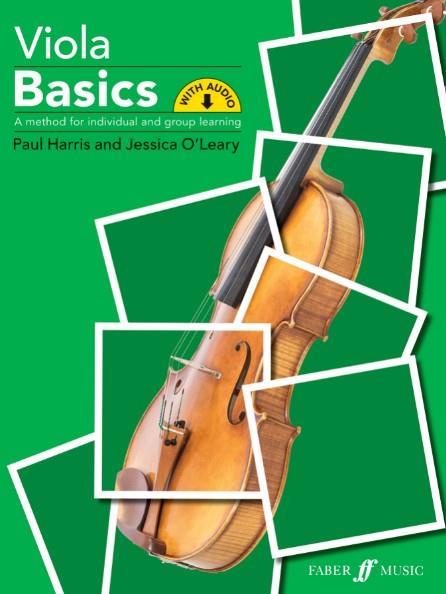Alex Laing reviews a book to encourage budding young viola players

Viola Basics
Paul Harris, Jessica O’Leary
64PP ISBN 9780571541867
Faber Music £12.99
Viola Basics is written by two of the most respected figures in music education. The book is a guide from the very beginning of the young violist’s journey to approximately ABRSM Grade 1 level. While this might be true of the level of music presented, the volume does a great deal more in setting up excellent methods, habits and ideas, which will enable the young player to progress far beyond the tunes contained in these pages.
The book is presented in 18 stages, from open strings through to some simple chromatic movement. It is great to see harmonics played out of first position with a fourth finger introduced before first-position fingerwork. This promotes a healthy fearlessness of shifting at an early stage, and also supports a more naturally rounded left-hand position.
There are 75 short tunes in the book: some new compositions with engaging titles such as Progression of the Scrolls and Waltz of the Loose Bow Hairs; and some familiar tunes, including Beethoven’s Ode to Joy and Mozart’s Bird Catcher’s Song. Each tune may be performed with a backing track, and Harris and O’Leary thoughtfully encourage this, slowing the backing down as necessary.
The real strength of the book comes with the superb practical advice. The ‘Four Ps’ are reinforced regularly and healthily: Posture, Pulse, Phonology (exhorting pupils to seek good quality sound) and Personality (of the music), which encourages character over correctness.
Each stage comes with its own warm-ups, top tips and activities. The top tips are tiny words of advice such as what to do with the bow during rests. The warm-ups include windscreen wiper movements with the bow, and finger tapping with the fingers of both hands. The activities are fun and always useful. These may help with physical freedom and awareness, like an encouragement to bounce the knees or sway the hips; they may help with creativity by encouraging improvisation or composition; they may help directly with learning, by getting the pupil to teach a new technique back to a teacher or to a parent or to a fellow student, which encourages greater depth of self-understanding.
The one missed opportunity with this excellent volume is that there is no attempt to celebrate the viola as opposed to the violin. At beginner level the techniques are of course virtually identical; if the book were transposed into the treble clef, no one would suspect it wasn’t entirely for the benefit of beginner violinists. But if the book is targeted specifically at young violists it would be good to make this a virtue, and at least add some commentary to make the viola feel more special. This said, Viola Basics is a must-have for every teacher of beginner viola.
ALEX LAING











































No comments yet